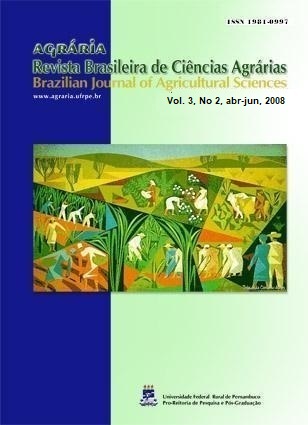Alternativas e caracterização da Caatinga em assentamentos rurais no Estado do Rio Grande do Norte
DOI:
https://doi.org/10.5039/agraria.v3i2a216Palavras-chave:
manejo florestal, semi-árido, sustentabilidadeResumo
Neste trabalho, foi caracterizada a Caatinga em áreas de assentamentos avaliando-se alternativas de sustentabilidade. Sete áreas foram inventariadas em assentamentos localizados no Sertão do Estado do Rio Grande do Norte. Os estratos vegetacionais foram subdivididos em quatro grupos, de acordo com o grau de cobertura do solo, e as árvores amostradas separadas em classes de uso potencial (lenha, estaca e mourão) e estimados os valores praticados para esses produtos na região. Observouse, entre os assentamentos, alta variação no número de espécies com potencial para o manejo, no estoque total de madeira e, conseqüentemente, no rendimento proporcionado de cada área. No geral, a rentabilidade vista nas áreas estudadas foi baixa, podendo ser praticada para obtenção de uma renda complementar, especialmente nos meses de estiagem, quando as atividades agrícolas não são praticadas na região.
Downloads
Downloads
Publicado
Como Citar
Edição
Seção
Licença

Este trabalho está licenciado sob uma licença Creative Commons Attribution 4.0 International License.


